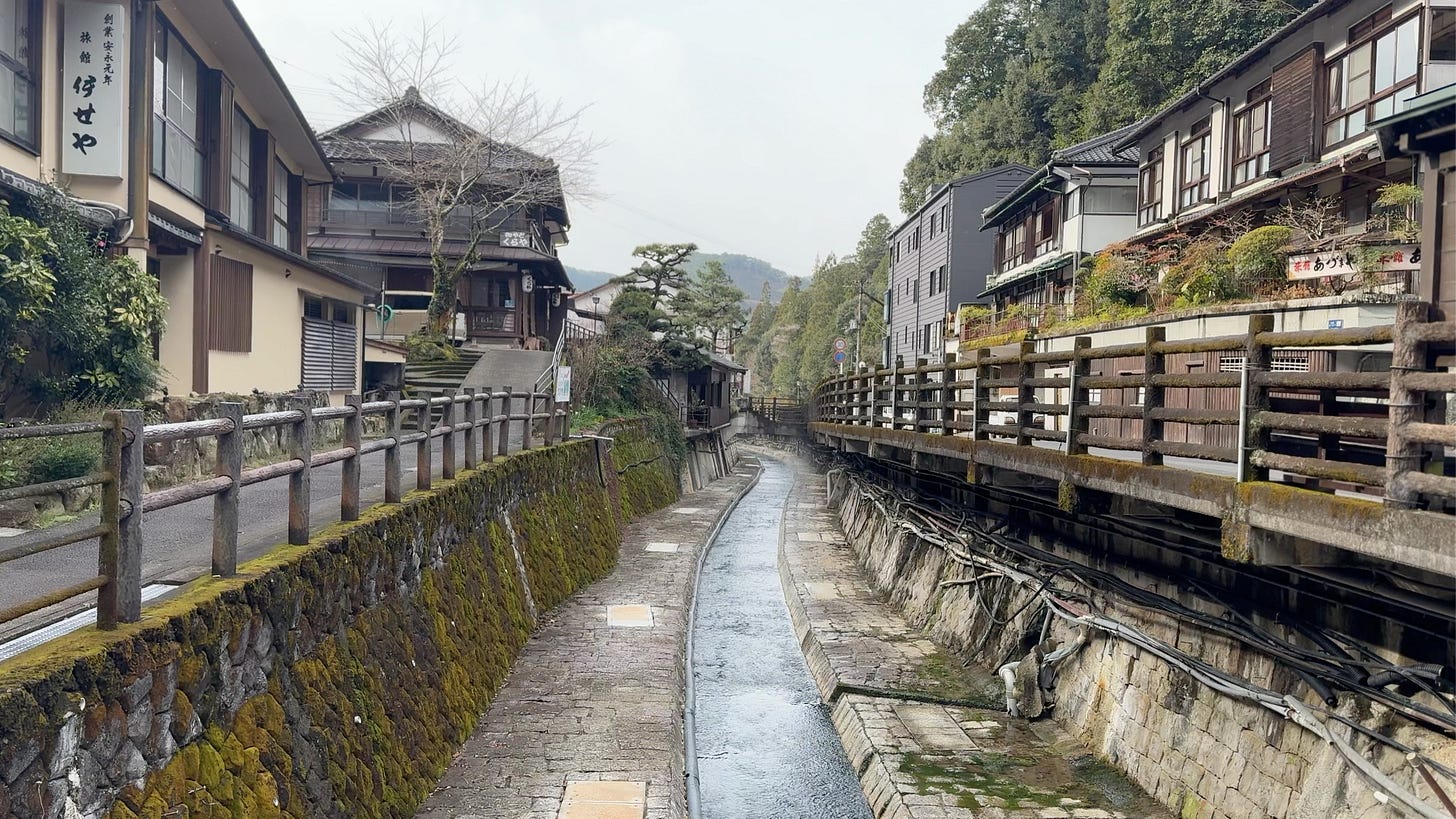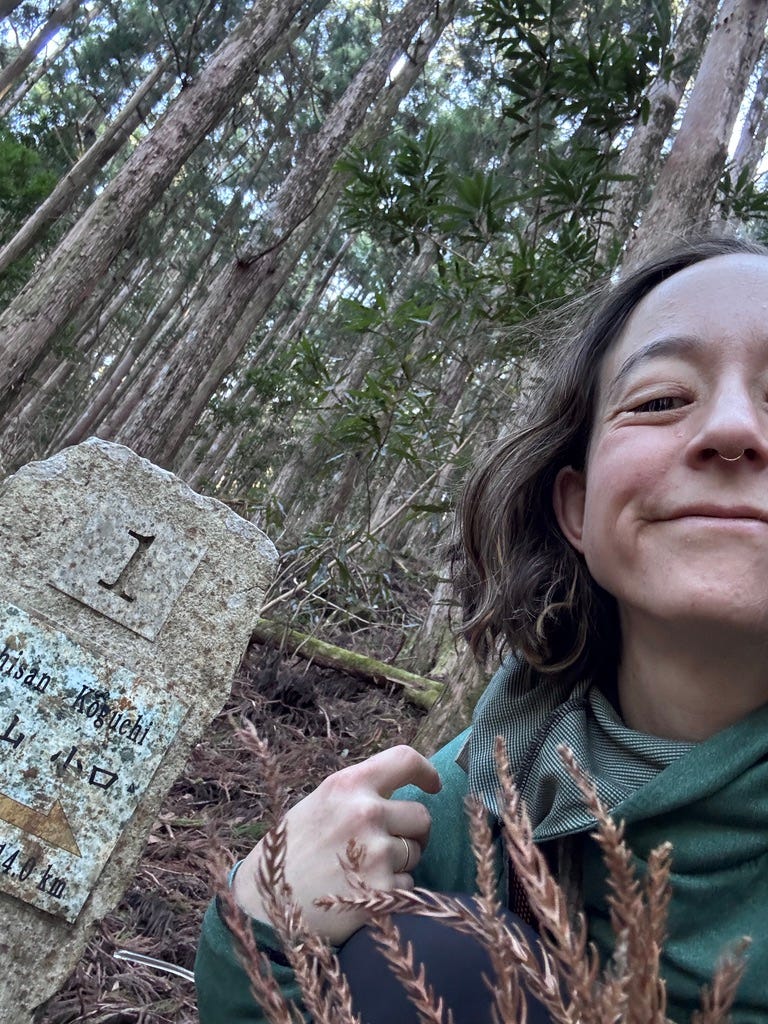Process Pending: walking the Kumano Kodo [Japan pt. 1]
thousands before... thousands after... walking the Nakahechi route of the Kumano Kodo
Israel continues to inflict horrific violence on Gazans. A reminder that you can call your reps easily with 5Calls to demand that your reps pressure Israel to allow in humanitarian food and aid.
The Kumano Kodo is a Shinto pilgrimage trail network with more than a thousand years of history. Traversing the hills and valleys of the Kii mountain range that spans a wide mountain range south Osaka, Japan, the Kumano Kodo primarily connects three major shrines: the Kumano Hongu Taisha, the Kumano Nachi Taisha, and the Kumano Hayatama Taisha. The most well-known set of trails is called the Nakahechi route, and it traverses the peninsula from Takijiri-oji in the west to Nachi Taisha in the east.
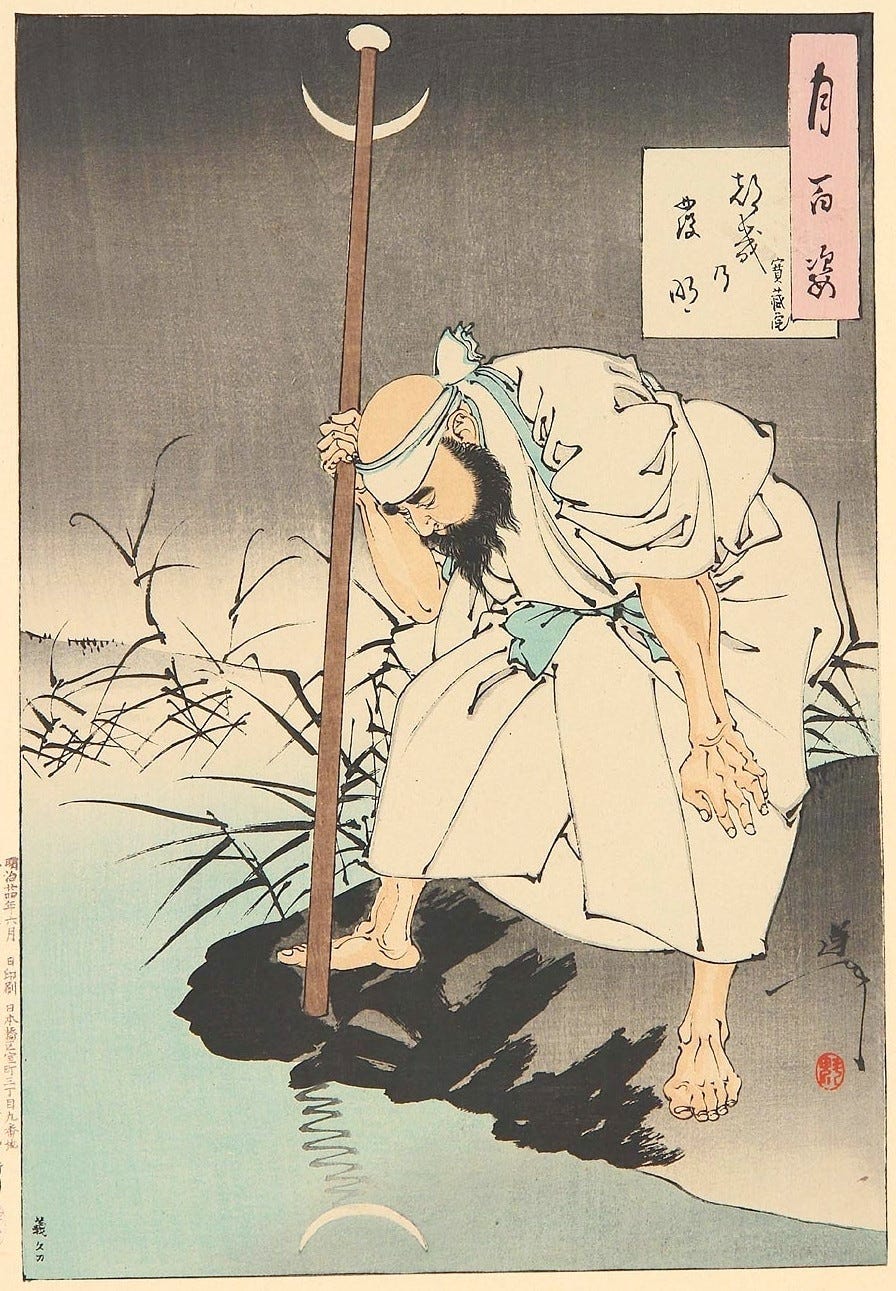
I hiked the Nakahechi in 5 nights/4 days in March 2025. Landing at the Narita airport off a 10-hour flight from Amsterdam, I shipped off my suitcase1, picked up an eSim, and left straight for Tanabe:
Utrecht ⟶ (🚞1 hr) ⟶ Amsterdam ⟶ (🛫10 hr) ⟶ Narita airport ⟶ (🚞1hr) ⟶ Tokyo Station ⟶ (🚞2.5 hrs) ⟶ Shin-Osaka ⟶ (🚞2.5 hrs) ⟶ Tanabe
I slept on the plane and trains, ate bento boxes station kiosks, and except for a slight mishap where I boarded a limited express train without a ticket (never to be repeated), I arrived in Kii-Tanabe around 21:30. The town was quiet, misty, and empty. I picked up snacks and a pack of shampoo from 7/11 and walked to my hotel, the Tsukasa House. The host had already set up my futon. I showered, brushed, collapsed, and slept exceedingly well until a group of ladies woke up at 530, Buddhist bells chiming gently, their chatter happy and bright.
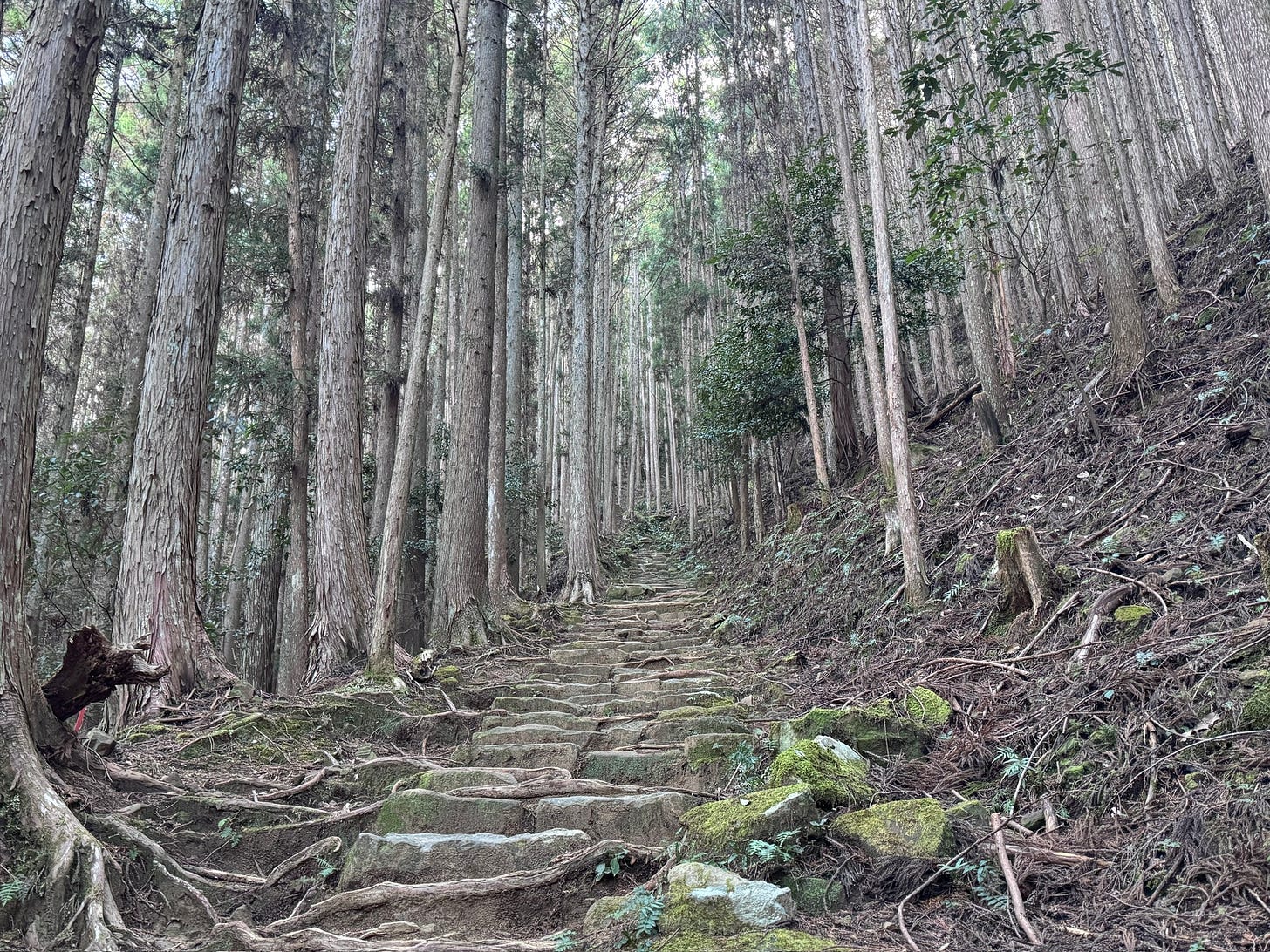
day 1
I caught the 650 bus packed with other kitted and fitted hikers to Takijiri-oji, a 40-minute ride heading up into the hills of Wakayama prefecture. A middle-school-aged boy and two older ladies were the only locals on the bus.
The path begins at a small shrine, then a steady uphill climb. A squeeze through the hole under turtle rock promises an easy delivery if you can make it through. Through cedars (sugi), cypresses (hinoki), and pine ... pink camellia flowers dropped on their trail like small tropical miracles ... the tiny shoe repair station in takahara ... and the first blooming plum trees ... leading and trailing etienne2 ... michiko’s bells ... the couple, posed on the trailside, baby pressed to and feeding hungrily from her mother’s breast ... the gentle rolling ... the small shrines ... the convenience store off the highway ... bagel lunch with anya and maite ... the graveyard of dead samurai ... coffee from vending machines ... cats and gods ... anti-vax australians ... masa and izumi’s comedy skit starring a huge pressure-cooker to explode popcorn, dried noodles, and barley ... a fitful sleep ... dawn3
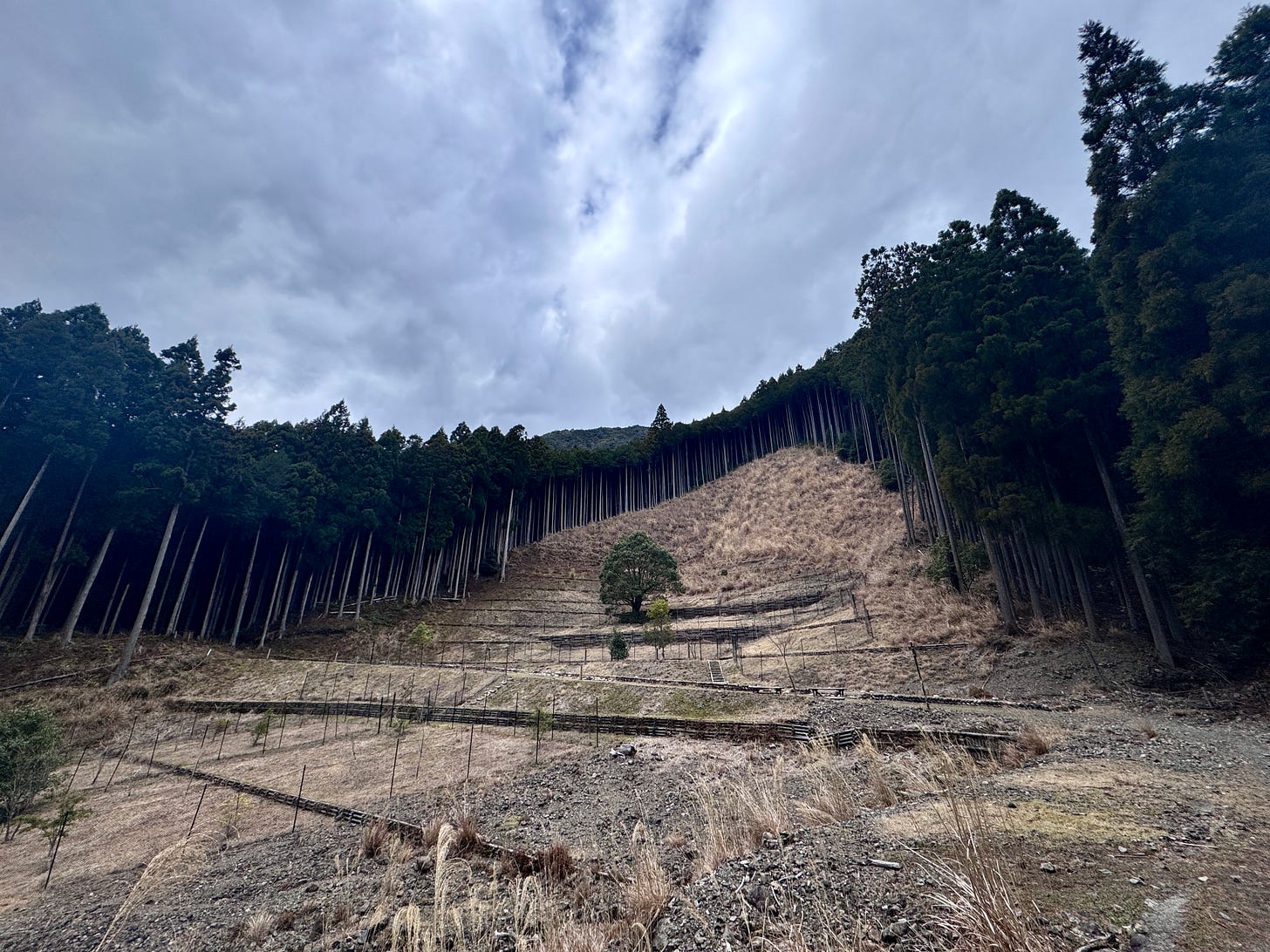
day 2
the empty roads ... the shibu inus ... a shrine with 800-year-old cedars ... a few more plum flowers, bursting in white sprays ... a plaque for a royal baby left in a cave centuries ago ... hiking with anya, maite, and matt ... the taiwanese ladies dancing flamenco ... the detour ... the ill-fated hike up the hill ... the long descent ... alone and an overwhelming sense of ease ... lunch by the waterfall ... the tropical feeling ... the single tree glowing in the abandoned rice terraces where the village used to be before it was moved4 ... the rectilinear dams ... the empty teahouses ... the shrine guarded by two foxes ... then into towns ... dad and son ... the view of the largest torii gate in japan ... the descent into hongu ... the wolf museum, plum wine, Silence ... coins for clementines and two bags of green tea from roadside boxes ... the shrine ... and the social overwhelm ... walking through the torii gate ... the emptiness where the three moons fell ... the gnawing hunger and the exhaustion on the way up dainichi-goe ... the broken nose jizo ... feet giving in ... the onsen broth (i got it at you-got-it) ... a mineral rich soak at the hostel ... the cubby ... the snoring ...5
day 3
lamenting i should have stayed an extra day ... the road to the bus stop ... a small bento for later ... the couple and baby ... a straightforward, almost immemorable day ... moments—just minutes—where the wind picked and i could really sense that i was walking in the footsteps of tens of thousands come before ... and the tens of thousands to come ... the porcelain and the plastic ... the happy hiker from shanghai who went to ohio state ... the vending machine at the toilet ... the couple and the baby, again ... the feeling of holding in the nara inside me ... the god-like cat guide who disappeared at the turn in the stairs ... watching a bird hunt at the confluence of rivers like so many others must have ... the long sleep ...
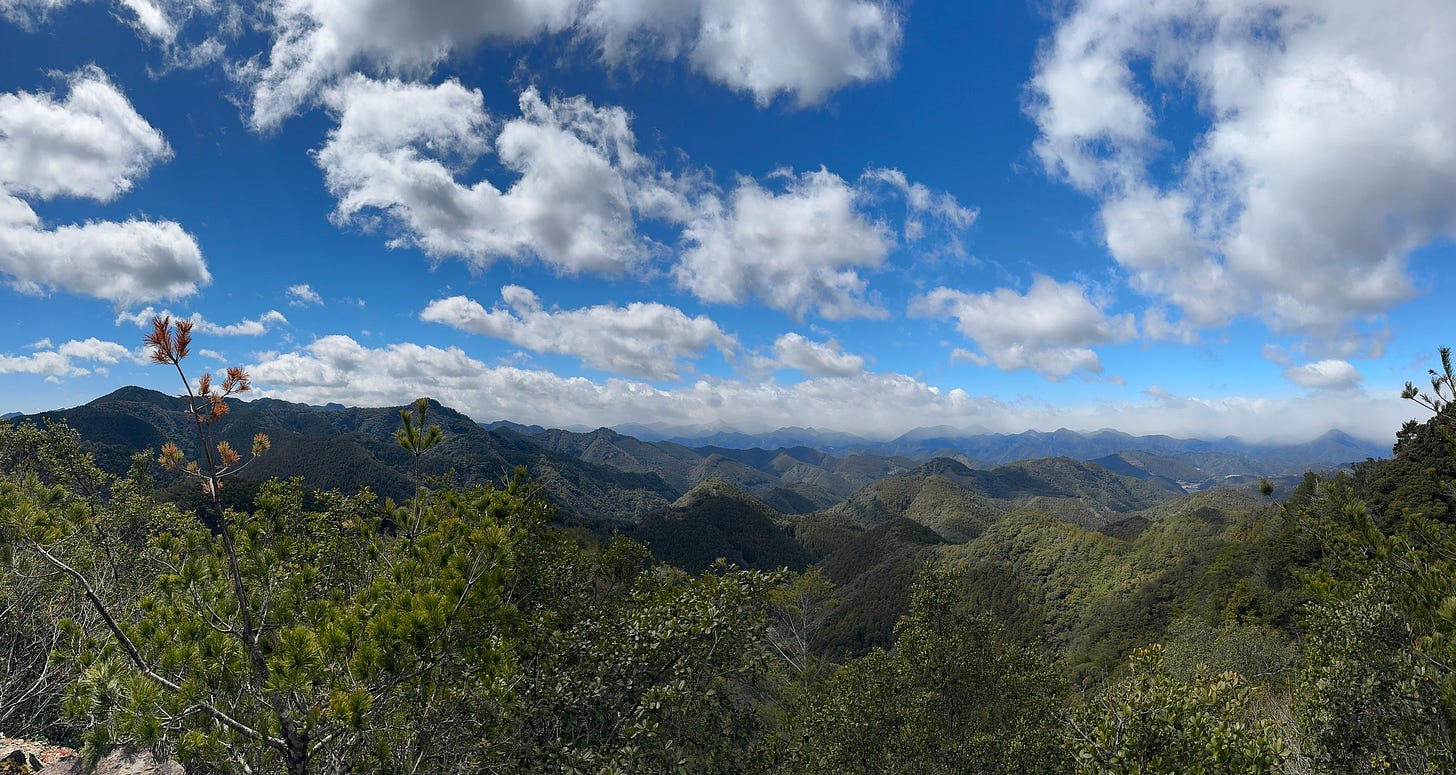
day 4
... the final day ... the surprising ease of the climb ... the stone markers ... the cypresses that went on and on ... the feeling of floating and overjoy ... joseph out of nowhere at the top ... the dusting of snow ... lunch on the rock in the sun ... eitienne going the other way ... the immense cold ... the bridge and the river ... the 37 jizos ... the forestry road and unease of disturbance ... the icicles hanging from roots ... the road of the dead ... the view of the sea ... the ten tea houses, now just foundations ...how could the god who mingles \ with the dust \ suffer” ... the descent and descent ... the attempt to stay present and the desire to hold and the ache to be done ... the shrine and the people ... finishing alone and finishing silence ... the onsen ... the lonely dinner ... lonely breakfast (the only lonely times) ... the waterfall of connection and the temple ... the descent through the cedars ... the end of the hike ..
At the train station in kii-katsuura, just before boarding, another bird of prey like the one from last night is hunting, it calls, I swear, in time with the train, which arrives in song.
Details
Hike
Day 1: 14 km; +1010m; -840m (Takijiri to Chikatsuyu)
Day 2: 33 km; +1460m; -1660m (Chikatsuyu to Hongu to Yunomine)
Day 3: 15 km; +700m; -700m (Yunomine to Hongu to Koguchi)
Day 4: 14 km; +1260m; -930m (Koguchi to Nachisan)
Lodging
In Tanabe, I stayed at the Tsukasa House. In Chikatsuyu, Chikatsuyu Pon, which I would recommend whole-heartedly if you want a short day, otherwise plan to hike further. The third night I stayed at J-Hoppers hostel in Yunomine; it was great minus the snoring, the onsens right there were amazing. The fourth night I stayed in Koguchi at Koguchi Shizen-no-ie, a school turned into a large, minimal lodge between two rivers. Nearby was the Kumano café—incredible coffee, music, comfort. The last night I stayed at Mitako Senso, the only place I wouldn’t necessarily recommend. It would not have been hard physically, but it might have been emotionally, to go directly to Kii-Katsuura at the end of the last hiking day. I had help from a Japanese speaker booking the last two places; I booked Tsukasa House on booking.com and Chikatsuyu Pon I emailed directly. I found a lot of information about the hikes through kumano-travel.com, including lots of great maps, but found their booking service impossible to use (though I really like that the goal of it is to keep the money in the community; it just needs a bit of help from full stack engineer). None of the other foreigners I talked to on the trip had successfully used it.
Gear
Many people opted for a luggage forwarding service so they didn’t have to carry anything during the day. In my trusty 35L Osprey, I carried a few changes of clothes, books, and was particularly grateful I brought my big down jacket with me—it snowed a bit on the first and last day. Gear list:
on top: merino wool baselayer from rei; my beloved Thuja lightweight, longsleeve hoodie, and a lightweight fleece; sometimes i wore my big down puffy
on bottom: merino wool baselayer from rei; prana pants (like these)
on feet: darn tough socks; la sportiva approach shoes (if you’re ankles are okay, i would really recommend approach shoes for this walk instead of hiking boots (not enough flexibility) or running shoes (too slippery and soft for rocky, rooted surfaces))
on head: beanie
extras: changes of underwear for all days + 1 extra pair, 3 pairs of socks, a pair of pajamas (I liked having sweats, but didn’t need them, as everywhere provided yukatas for pajamas), and plane clothes; a set of rain gear (pants + jacket) that i didn’t end up using
and also: 2 books, some writing material, some drawing material, etc
Food
I booked the dinner, breakfast, and lunch option when staying at Chikatsuyu Pon and Shizen-no-ie. On the first hiking day, I had lunch at a bagel shop in Chikatsuyu; on the third hiking day I picked up a bento lunch at Bond. I bought a few snacks at stores and fresh fruit from boxes people put out. I bought many cans of Boss coffee from vending machines. Except for the trains, it was a very cheap trip; lodging + food averaged to ~$50/day, maybe less. It would be hard, but not impossible, to do this on an all vegetarian/vegan diet—I met one person who was doing it, and she was doing okay since everything was booked through a tour service but it was difficult to find food outside of the lodging.
See you out there!
Cheers,
Elizabeth
I shipped my suitcase at JAL ABC north to my Tokyo hotel, paying a small storage fee so it would arrive 7 days later. I booked my esim to pick up here ahead of time.
I have given everyone new names… since some I learned and some I never did
in retrospect, I could/should have gone at least 5 km further on the first day … but then would not have had the pleasure of meeting Izumi and Masa, my elegant, funny, and generous hosts.
ever so gradually coming to see “the trees with the lights in it”, from Annie Dillard’s Pilgrim at Tinker Creek
this day was super strenuous – something like 33 km with at least a few thousand meters of elevation gain and drop … advice to everyone: stay an extra day in yunomine


